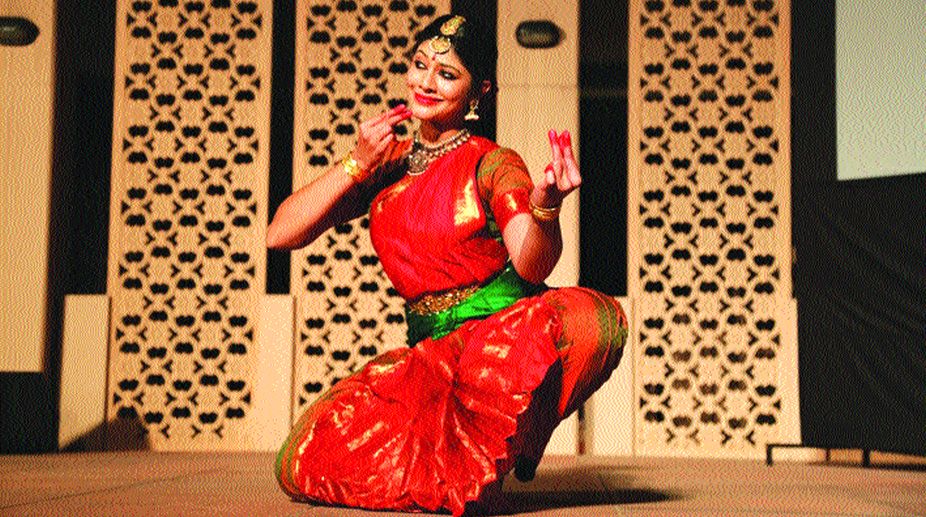Shriram Shankarlal Music Festival held in Delhi
The Music Festival was held from March 27-29 at Shriram Bharatiya Kala Kendra Lawns, Copernicus Marg, New Delhi.

The Ravi Shankar Centre, Chanakyapuri, also known as RIMPA, reverberated with music in its entirety with vocal, instrumental and dance performances from 16-19 February in celebration of the 97th Birth Anniversary of its founder Pt Ravi Shankar. The four-day festival of classical music and dance was dedicated to his disciple George Harrison for his 74th birthday. In fact this is RIMPA's annual festival, which Pandit Ravi Shankar had started himself in the memory of his disciple and a dear friend.
The festival concluded with the melodious Sitar recital by his senior disciple Arun Bharat Ram, who said, "This is a moment of us to reflect on our Guruji, and what better way would be for us students, than to honour him with the annual festival he had started? It is an opportunity for established and young artists to present their art." The screening of an incredible film on the legendary musician was the added attraction of the festival, that overwhelmed the audience each and every evening, before the performances.
The festival opened with the Sitar recital by Supriya Shah, who was joined by Sanjeev Shankar on the Shehnai, after rendering her main raga Yaman. The duet of Sitar and Shehnai offered the dessert in Thumri Manjh Khamaj, a raga created by Pt Ravishankar. The other attraction of the inaugural evening was the light classical vocal recital by Malini Awasthi. A tabla solo by Bickram Ghosh and a Hindustani classical vocal recital by Indrani Mukherjee were the other vocal and instrumental performances. The dance segment comprised talented dancers like Arushi Mudgal for Odissi, Dakshina Vaidyanathan in Bharatanatyam, and Sujata Banerjee and company for Kathak.
Advertisement
The delicate grace of Arushi pervaded throughout her performance right from Vasant, the opening number based on the opening Shloka of Kalidasa's Ritusamhar "Drumah sapushpah, salilam sapadmam…", describing the advent of the spring season when the trees are laden with flowers, the ponds are abloom with the lotus, the breeze is heavily scented, the nights are as delightful as the days. The thoughtfully-composed music by Pt Madhup Mudgal, based on ragas like Bhathiyar, Sohini, Vasant, Bahar and the combination of both in Vatant-Bahar, had captivating choreography by Madhavi Mudgal.
Then came the Nritta piece "Aahlad", the joyous abandon of melody and rhythm. This raga Shahana-based composition of Pt Madhup Mudgal was choreographed by Arushi herself. She chose the Odia song "Prano-sangini re…" for her emotive Abhinaya next with the immortal choreography of Guru Kelu Charan Mahapatra. A very special feature of her Odissi repertoire was the innovative way each and every item was titled, like Aahlad or Moort-Amoort (form and formless), that opened with a verse from the Mundakopanishad, describing the Purusha as the ultimate being ~ he who is formless, free from the cycle of birth and death, the creator of all creation and all-pervading. This invocation of the formless coexists with the worship of the many exquisite forms of gods and goddesses like the Shiva as Ardhanareeshwara, Ram and Krishna. The crux or the ultimate reality is one, that resides in all, whether with form or formless.
Arushi concluded with a celebration of the union of the form with the formless. Music for this was composed by Pt Madhup Mudgal with the rhythmic inputs from Guru Dhaneswar Swain and Budhanath Swain. The admirable aspect of Arushi's performance was that she tried to be innovative but adhering strongly to the tradition she belongs to.
Dakshina Vaidyanathan was also innovative in her repertoire, even though sticking to traditional "Margam". Her dazzling dance opened with the Ganapati Stavana, an invocation to Ganesha, in his typical gait. The opening Veda Mantras and the sound of conch-shell created the perfect ambience for this invocatory item. She proceeded with "Pannagendra-shayana Shri Padmanabha…," a composition of Maharaja Swathi Thirunal, and gave it the detailed treatment like a Varnam, studded with Swarajathi and the intricate rhythmic patterns interspersed with Abhinaya of a Nayika pining for her beloved Lord Vishnu. The eight statements of Shringara-Bhakti were woven into ragamalika according to her varied emotional states. The electrifying Jathis of Karaikudi Shiv Kumar were reproduced in Nritta by the energetic dancer.
Dakshina also presented a Hindi Pada of Swathi Thirunal "Main toh nahi jaun Jamuna teer…", depicting the child Krishna refusing to go to the banks of river Yamuna and mother Yashoda argues why not! The pada takes a poignant turn when Dakshina enacts the Virahini Gopi, who doesn't want to go to the those banks of Yamuna, where she had the love alliance with her beloved Krishna, who has left her and gone far away. Dakshina concluded her Bharatanatyam recital with a Tillana in raga Amritavarshini. Guru Rama Vaidyanathan had choreographed all the numbers presented by her gifted disciple Dakshina.
Advertisement